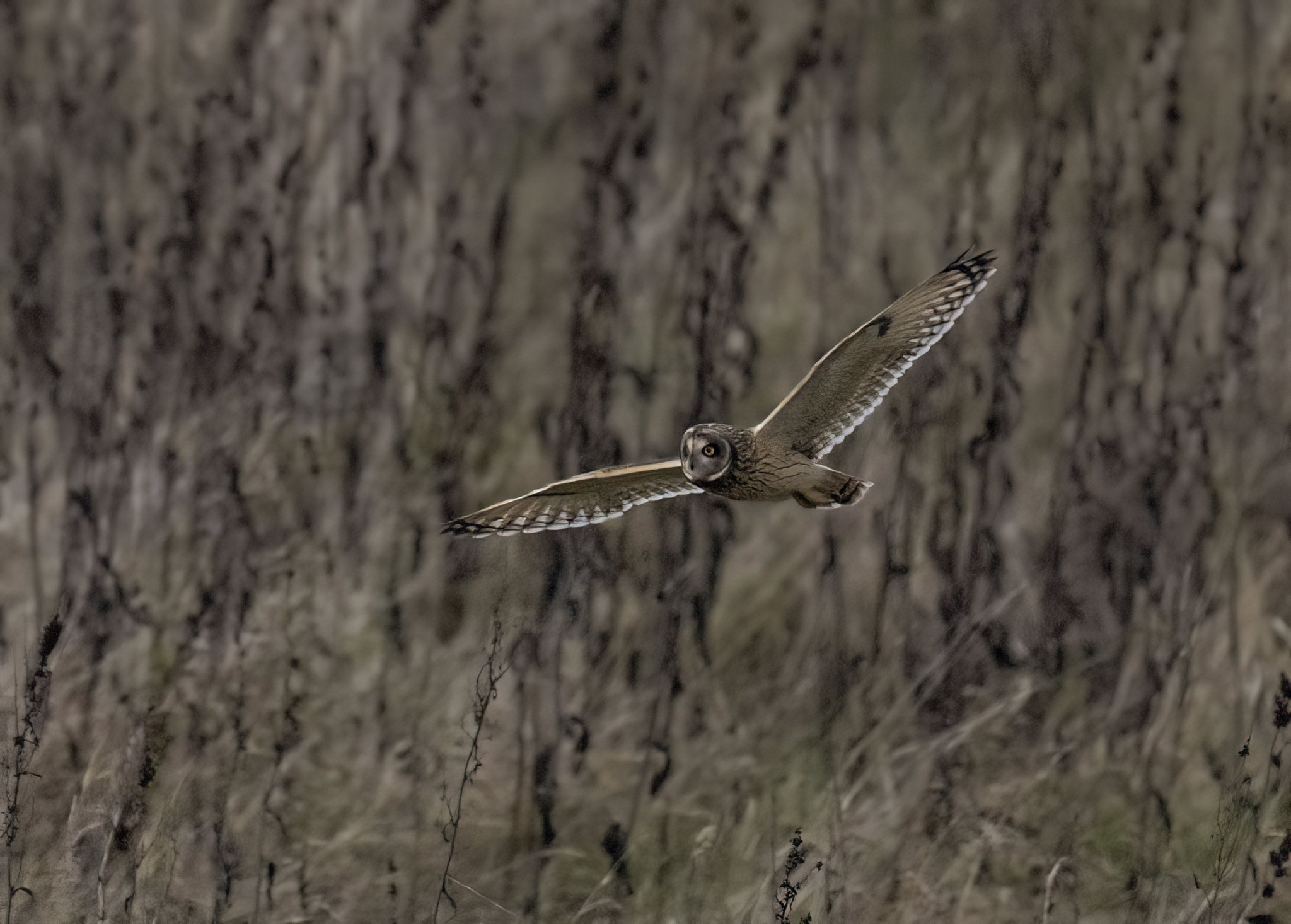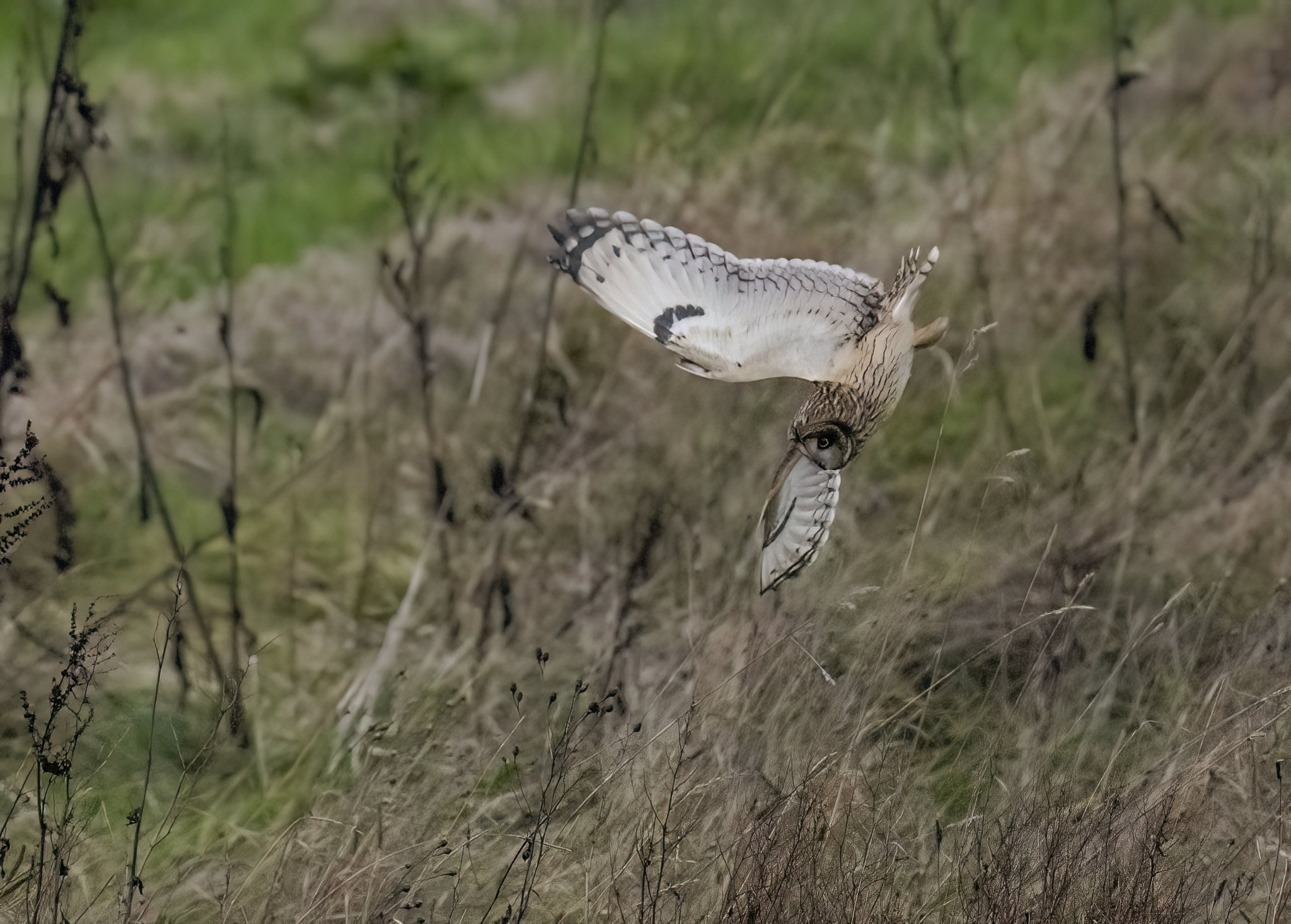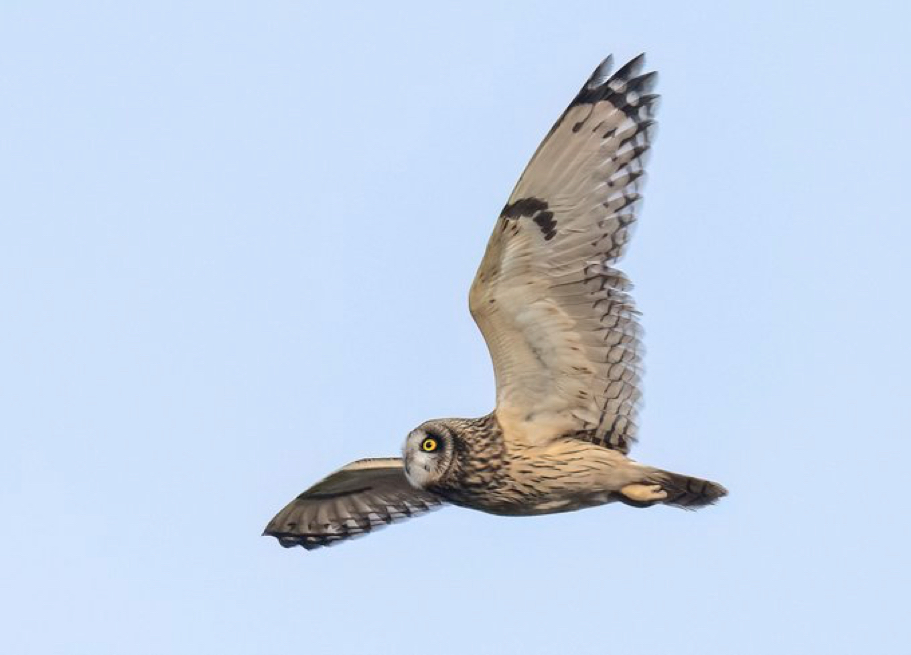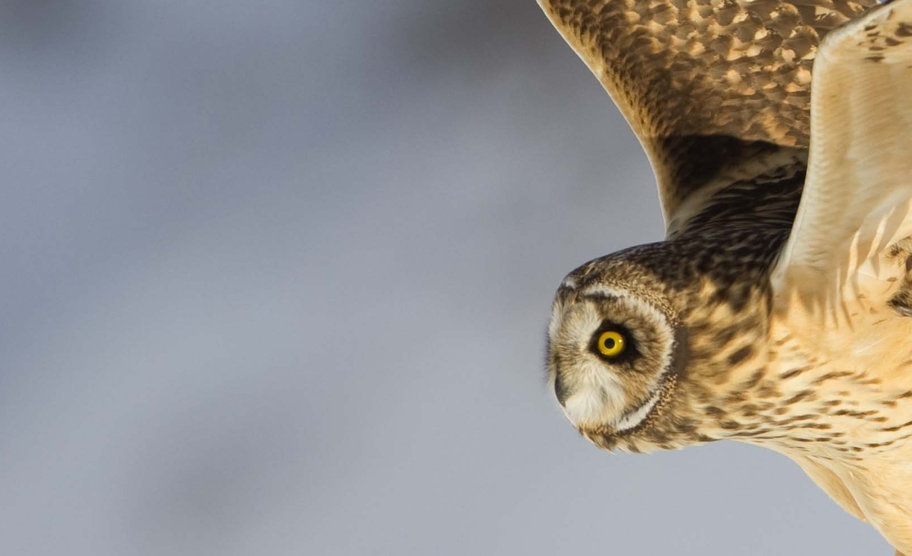In Search of Short Eared Owls
This mixture of walkers, dog walkers, cyclists and even open water swimmers does not seem to impact on the wildlife too much.
Owls draw a crowd, always have and always will, there were ten or so people waiting near us. Not that you could see them in the darkness, you could hear their teeth chattering in the in the still air. As we walked back towards the car park, more and more people were arriving all to see the birds. I think while you have that much interest and that many people they will be relatively safe from human disturbance.



The still images above were taken by @phil_smithson. Considering the very low light levels and despite ISO settings of 4-6000 I think these are incredible. All taken at 800mm. The birds were around 150 metres from where we were standing.
Ecology Report: Short-Eared Owl (Asio flammeus) in the United Kingdom
Introduction:
The Short-Eared Owl (Asio flammeus) is a captivating and enigmatic bird of prey that inhabits a variety of open habitats across the United Kingdom (UK). This report aims to provide an overview of the ecology of the Short-Eared Owl, emphasising its current status on the Red List of Birds of Conservation Concern.
Distribution and Habitat:
Short-Eared Owls have a widespread distribution in the UK, favouring open landscapes such as moorlands, heathlands, marshes, and coastal areas. They are particularly associated with rough grassland, where they hunt for small mammals like voles and mice. Breeding populations are found throughout the country, with significant concentrations in Scotland, Wales, and northern England.
Breeding Biology:
Short-Eared Owls typically breed on the ground, relying on tall vegetation or the shelter of rocks for nesting sites. Breeding season usually occurs from March to July, and the owls produce a clutch of eggs that hatch after a short incubation period. The survival of their young is closely linked to the availability of prey, particularly small mammals.
Conservation Status:
The conservation status of the Short-Eared Owl is of concern, leading to its inclusion on the Red List of Birds of Conservation Concern in the UK. The Red List categorises species based on their population trends and breeding success. The Short-Eared Owl faces multiple threats that contribute to its declining numbers, including habitat loss due to agriculture intensification, urbanisation, and climate change.
Threats to Short-Eared Owls:
- Habitat Loss: Changes in land use and agricultural practices, including the conversion of natural habitats into farmland, have reduced the availability of suitable breeding and foraging areas.
- Climate Change: Alterations in weather patterns and temperature can affect the distribution of prey species, potentially impacting the owls' ability to find food.
- Human Disturbance: Increased human activities, such as recreational use of habitats, can disturb breeding birds and disrupt their nesting sites.
Conservation Efforts:
Several initiatives and conservation measures have been implemented to mitigate the decline of Short-Eared Owls in the UK. These include:
- Habitat Protection: Efforts to designate and protect important habitats for Short-Eared Owls, including the creation of nature reserves and conservation areas.
- Research and Monitoring: Ongoing research projects and monitoring programs help gather essential data on population trends, breeding success, and the impact of conservation interventions.
- Public Awareness: Increasing public awareness about the importance of conserving the Short-Eared Owl and its habitat, involving local communities in conservation efforts.
The Short-Eared Owl, with its distinctive appearance and unique behaviour, is an integral part of the UK's biodiversity. However, its inclusion on the Red List highlights the urgent need for comprehensive conservation strategies to address the threats it faces. Through collaborative efforts involving government agencies, conservation organisations, and the public, there is hope for the recovery of the Short-Eared Owl population and the preservation of its vital role in the UK's ecosystems.

